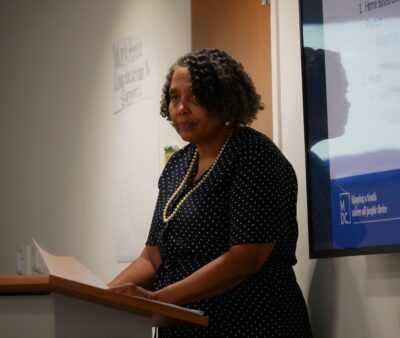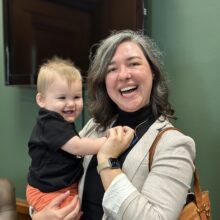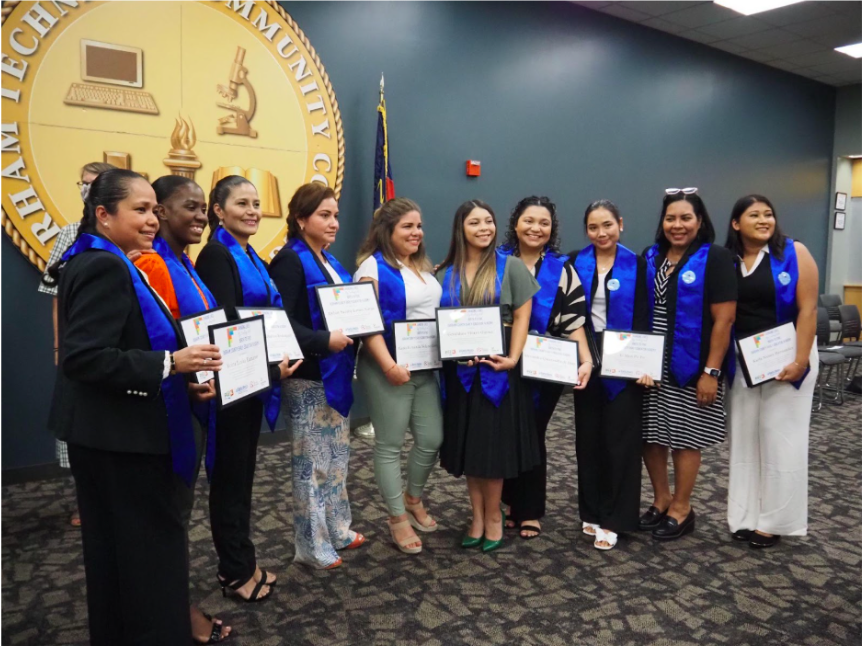
In at least 11 counties across North Carolina, early childhood education agencies and community colleges are running child care academies designed to get new teachers into classrooms faster than traditional routes — and they’re doing it at little to no cost to participants.
Lasting from two to six weeks and requiring 20 to 64 hours of class time, these child care academies are customized to meet the local needs of the communities they serve.
In recent months, there’s been growing interest in expanding access to child care academies as a way to address early childhood educator shortages. A 2024 survey found 60% of licensed child care providers in North Carolina were experiencing staffing shortages.
Mary Olvera, the director of teacher education for the North Carolina Community College System, said that more than a dozen additional community colleges are preparing to offer child care academies or have expressed interest in doing so, which could help ease those staffing concerns.
A $1.476 million pilot to expand child care academies with state funding was included in the budget passed by the North Carolina House earlier this year. The pilot funding did not make it into the General Assembly’s “mini-budget,” which was signed by Gov. Josh Stein in August.
The North Carolina Division of Child Development and Early Education (DCDEE) has grants of up to $50,000 available for as many as 10 community colleges or universities in the UNC system that want to run their own child care academies between Oct. 15, 2025 and July 31, 2026. Applications are due Sept. 24.
Child care academies were also lifted up as “scalable local solutions” in a February report from the NC Chamber Foundation. The governor’s North Carolina Task Force on Child Care and Early Education highlighted child care academies in its June interim report.
Related reads



“I’m very happy for the attention that child care is getting right now,” Olvera said. “The governor’s task force is coming up with lots of really wonderful recommendations, and it does feel like they’ve taken a little turn that’s more solution-focused; people seem to be getting on the same page.”
Given this momentum, here’s what we know so far about where child care academies are operating, what they look like, how they’re funded, and how their graduates are helping to fill gaps in the early childhood education workforce.
Child care academy models
There are two basic models of child care academies that have developed in recent years — a classroom-ready model and a teaching credential model. Both are referred to as child care academies.
They may be administered by local Smart Start partnerships, community colleges, or Child Care Resource and Referral (CCR&R) organizations, but are typically a collaboration among two or more of these entities.
Olvera said the classroom-ready model originated at Catawba Valley Community College.
This model requires at least 20 hours of classroom instruction and qualifies students to work in a licensed child care facility. Trainers in the classroom-ready model help students register with the North Carolina Identity Management Service (NCID) and complete required health and safety training — including CPR, First Aid, Sudden Infant Death Syndrome (SIDS) and Infant/Toddler Sleep Safety (ITS) — as well as criminal background checks.
Prospective teachers and their employers would typically have to manage this process and incur associated costs on their own. That’s not the case with the child care academy.
“It was designed to get people everything they need to step into work,” Olvera said.
Upon completion of the classroom-ready child care academy, students are qualified to work in a licensed child care facility, but not as a lead teacher.
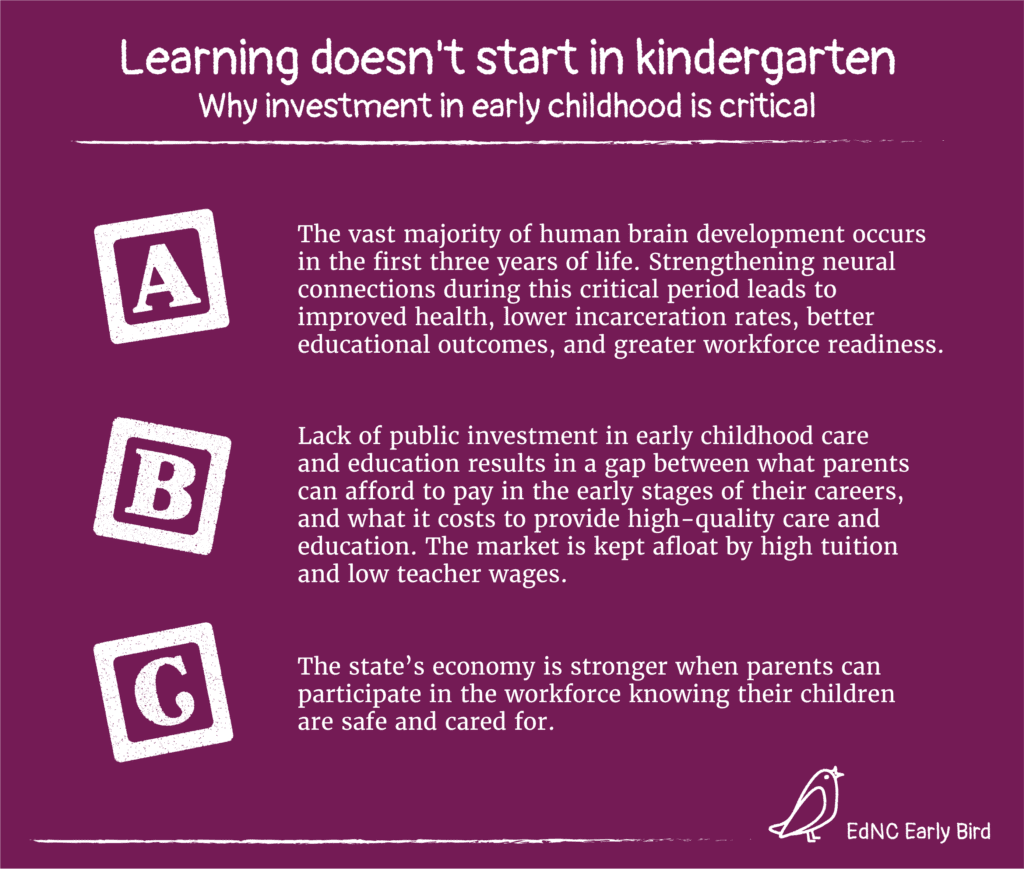
The teaching credential child care academy model is different. It includes all of the training from the classroom-ready model, but also the curriculum for EDU 119 — the semester-long introductory community college course that has historically been required for prospective lead teachers in licensed child care classrooms. Another route to becoming a lead teacher is five years of experience in a licensed facility.
“So we’re incorporating training in child development, the domains of development, activity planning, social-emotional development, brain development, all those topics that we touch on in 119,” Olvera said.
When students complete the teaching credential child care academy, they earn a continuing education credit (EDU 3119) that transfers to any of the state’s 58 community colleges and counts in place of EDU 119, which gets them the teaching credential that qualifies them to be a lead teacher. Olvera said this also sets students up to continue toward an associate degree in early childhood education.
In addition to qualifying students to work as a lead teacher in licensed child care, the EDU 119 credit also qualifies potential teachers to work as teaching assistants in elementary school classrooms.
Olvera said the child care academies also give students the opportunity to learn about scholarships, wage supplements, and apprenticeship opportunities, all of which can propel them toward higher incomes in the long run. Plus, some models host job fairs or find other ways to connect prospective teachers directly to employment opportunities when they graduate.
“I think the greatest benefit for this is you’re exposing students to local resources,” Olvera said. “So if we’re working with a Smart Start or a CCR&R, we’re pulling in what’s local, and so the students are getting an opportunity to really meet people in the field.”
Counties currently offering some form of a child care academy include: Buncombe, Cabarrus, Catawba, Davidson, Davie, Durham, Johnston, McDowell, Rowan, Stanly, and Wayne. If you know of additional child care academies in other counties, please email Katie Dukes: kdukes@ednc.org.
Child care academies in action
EdNC interviewed leaders from five child care academies to learn more about how they operate and how they’re funded.
Classroom-ready models
The Smart Start partnerships in Wayne and Johnston counties received joint funding from the Camber Foundation for their child care academies. Both partnerships work closely with their local community colleges to offer the classroom-ready models to prospective early childhood educators. Both programs run for about 60 hours over two to three weeks, and include much of what would be required for earning the EDU 119 credential.
Valerie Wallace, executive director of the Partnership for Children of Wayne County, said they hosted five child care academies in 2024 and 2025, three of which were funded by the shared Camber Foundation grant. In addition to covering the full cost of the training, they provide students with graduation incentives and tuition assistance if they continue their education, putting their average cost per student at $1,040.
Wallace’s colleague Shelly Willis, director of program coordination and evaluation, said 63 students have graduated from their academies, with more than half either going directly to work in child care or pursuing higher education.
Wallace and Olvera were involved in crafting the language in the House budget that included funding for a child care academy pilot. Funding would have gone specifically to the child care academies in Wayne and Johnston — in addition to 10 more counties — with the provision that:
The Community Colleges System Office and local community colleges shall coordinate to ensure that graduates of the child care workforce academies meet all requirements to be credentialed with the North Carolina Early Childhood Credential as lead teachers in child care in this State.
That would mean shifting from the classroom-ready model to the teaching credential model in Wayne and Johnston Counties, which Wallace said they’re ready to do.
“We’re kind of hoping it’ll go through with the partnership between the North Carolina Partnership for Children and the community college system, so that the alignment piece is there with that continuing ed (credit),” Wallace said.
Their next child care academy will run from Oct. 13 through Oct. 24.
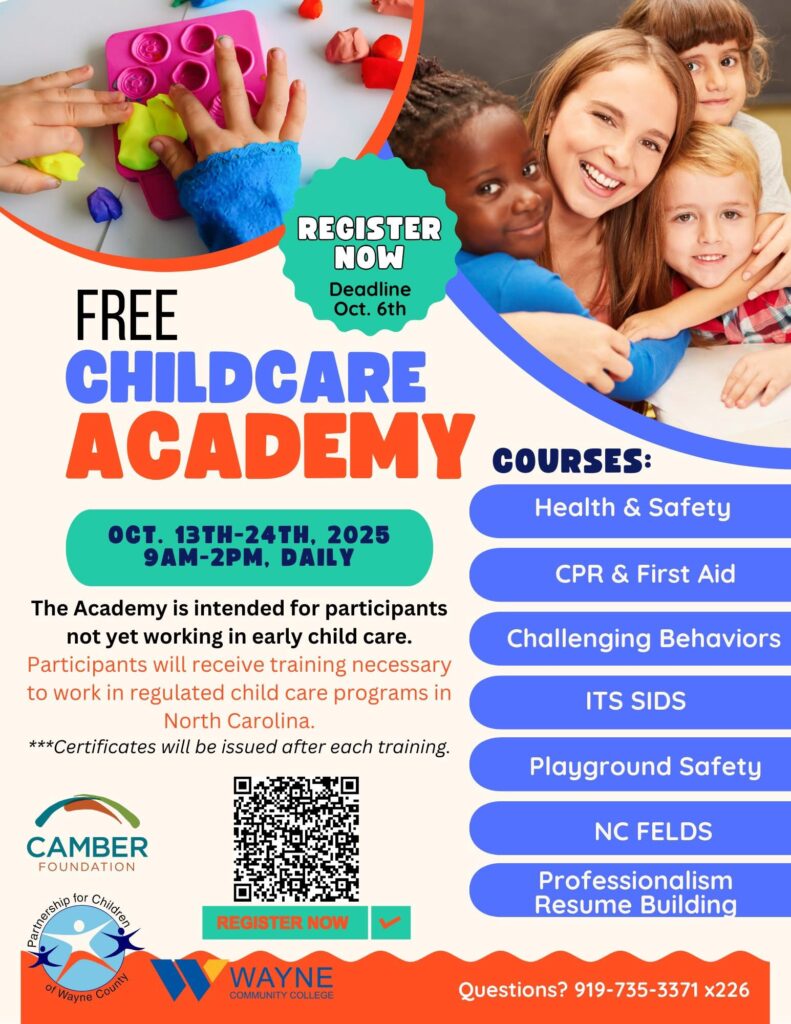
Emily Englehart, the professional development coordinator for the Partnership for Children of Johnston County, said they hosted three child care academies during the 2024-25 fiscal year. Twenty-six students have graduated, 14 of whom secured jobs in child care facilities, and four of whom are pursuing higher education.
The program costs around $430 per student, which is covered by the Camber Foundation grant they share with Wayne County.
Englehart said their next child care academy runs Oct. 6 through Oct. 24, and those who are interested can reach out to her via email for a registration link: eenglehart@pfcjc.org.
Priority will be given to Johnston County residents who are not currently working in child care and have no prior experience.
In an emailed statement about the program, Englehart wrote:
Child Care Academies are a cost-effective and impactful way to strengthen the early childhood workforce pipeline. They remove financial and logistical barriers for individuals entering the field, while ensuring participants receive the essential training and support needed to succeed as child care professionals. … Sustained investment from state and local policymakers could expand these opportunities to more counties, help stabilize the workforce, and address the ongoing shortage of qualified teachers. Supporting programs like the Child Care Academy is an investment in the long-term success of children, families, and the economy.
The child care academy in Stanly County is led by Cyndie Osborne, the program head of the early childhood education department at Stanly Community College. Working with trainers from the Stanly County Partnership for Children (the local Smart Start) and Child Care Resources Inc. (the local CCR&R), students spend two weeks getting classroom-ready.
Osborne said she’s run two child care academies so far under the classroom-ready model, but she’d love to implement the teaching credential model — she just doesn’t have the funding to cover the cost of a college course.
“What we have to consider is why it is important to have educated individuals working with young children,” Osborne said.
Students at the Stanly County child care academy paid for some aspects of their training, but could be reimbursed through a grant from the Stanly Community College Foundation that also covered the cost of some classroom materials.
Thirteen students have completed the classroom-ready model in Stanly County, and Osborne said five to 10 have received jobs as a result. She’s considering offering another child care academy in the spring of 2026.
“There are waiting lists for parents in our county, not having space because the centers don’t have teachers,” Osborne said. “So that was kind of the push for me.”
Teaching credential model
Katie Dowdle, the director of early childhood education at McDowell Technical Community College, leads a teaching credential child care academy. The first one was held for two weeks in July.
“And I mean, it’s like ‘The Fast and the Furious,’” Dowdle said, comparing the pace of the continuing education course to the popular movie series about street racing.
Dowdle said the requirements for getting into an early childhood education classroom can be overwhelming, especially for young students. She told her academy students: “This is where you start. This is where we can get you going, get you into school, get you that experience of being in a child care center, and then pursuing your associate’s degree.”
Six students finished with the credential that qualifies them to be lead teachers in a licensed child care setting. Four went directly into child care classrooms and two are pursuing higher education in Dowdle’s classroom this semester.
![]() Sign up for Early Bird, our newsletter on all things early childhood.
Sign up for Early Bird, our newsletter on all things early childhood.
A three-year grant from the Dogwood Health Trust covered the costs, which Dowdle estimates to be between $500 and $600 per student. The grant also covers the full cost of tuition and materials for students pursuing their associate degree in early childhood education at McDowell Tech.
Dowdle said the fast pace of the child care academy’s teaching credential model was made possible through collaboration with the community.
“People really rallied behind the idea of it,” Dowdle said, referencing coordination with the county’s health department, the sheriff’s office, and McDowell Tech’s own EMS and EMT trainers.
“Once people see that this is for the greater good of your community, most of the time they’re going to step behind you too, and say, ‘Yeah, this is good. We know that child care is a huge issue right now, and we would love to be a part of making sure that we can help this along.’”
Because McDowell County has a small population, Dowdle was able to develop personal relationships with licensed child care centers and pre-K classrooms, helping her match the community’s need to her student’s qualifications after they earn their teaching credentials through the child care academy.
“We’re small but mighty,” Dowdle said. “We don’t have the manpower to do a whole lot of things, but this is something that I think we could do well.”
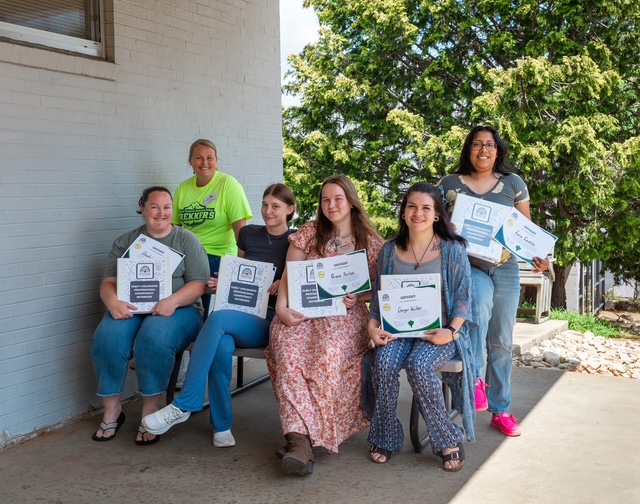
Durham County has also adopted the teaching credential model, but their first child care academy lasted six weeks instead of two.
Kristi Snuggs, president of Early Years, said the Durham child care academy is a collaboration between her organization (the local CCR&R) and Durham Technical Community College.
Funding came from Duke Community Affairs — specifically the Duke Doing Good Economic Mobility Grant — along with Durham PreK. The cost per student was an average of $1,264.
Snuggs said she thinks spreading the EDU 3119 credit across six weeks gives students more time to reflect on, process, and apply what they’re learning. And the length of the Durham child care academy didn’t seem to deter students from signing up — Snuggs said they had 140 applicants for 20 slots.
“Ours was outrageously popular,” Snuggs said. “And the other cool thing about ours is it’s aligned with Durham PreK and we’re really trying to make the workforce match the children, and so every (aspect) of ours was bilingual (in English and Spanish).”
She’s working with Durham Tech to schedule their next child care academy during the 2026 spring semester.


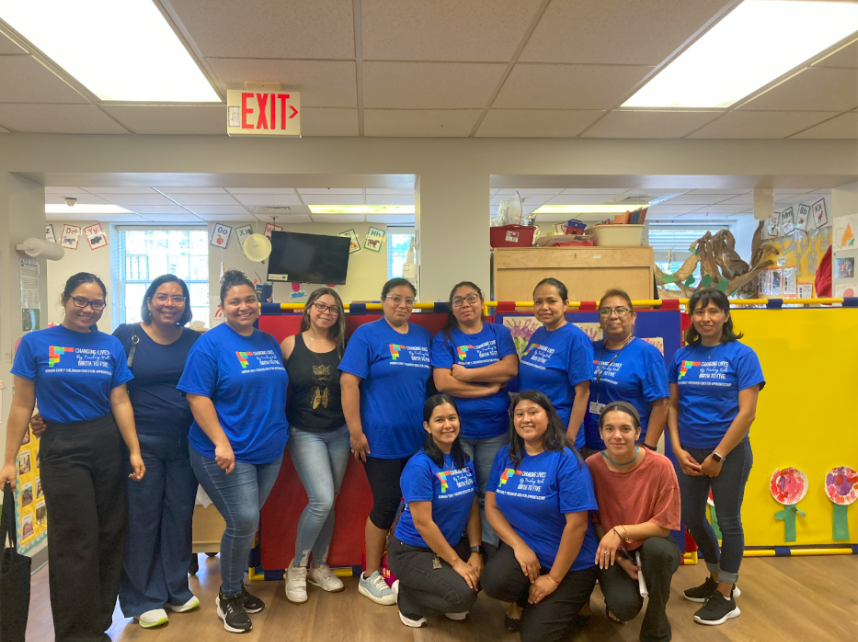
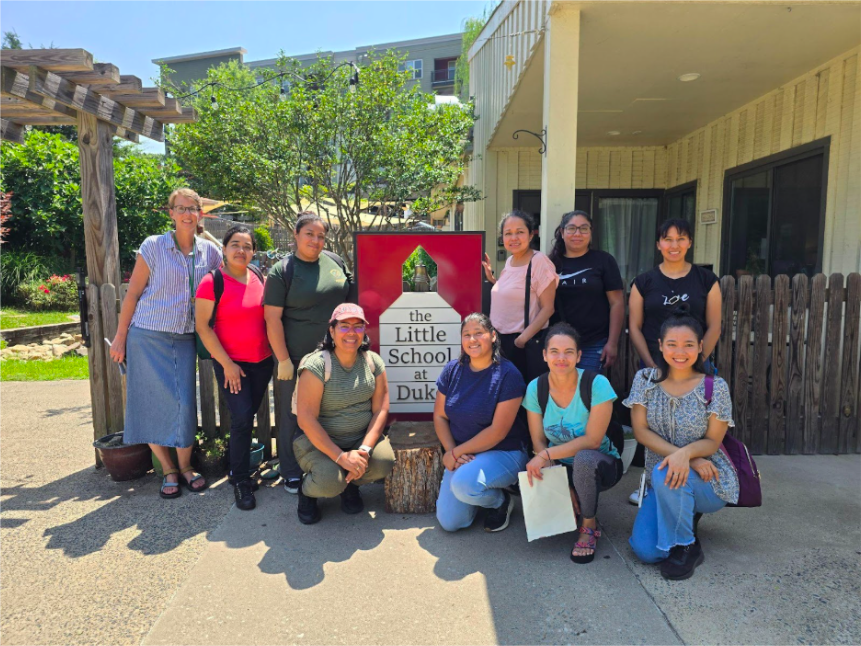
Snuggs said the Durham child care academy adopted the teaching credential model because when students complete the program, they’re able to start their careers as a lead teacher right away, putting them on track to earn higher incomes.
Dowdle made a similar point.
“The thing is, these positions that they’re going into, they’re not making a lot of money,” Dowdle said. “The reason that you’re in child care in the first place is because you have a heart for children, it has nothing to do with pay.”
She said starting their careers debt-free and with a credential that can transfer to course credit for continuing their education can improve their long-term career outlooks.
Editor’s note: The Dogwood Health Trust supports the work of EdNC.
Recommended reading

